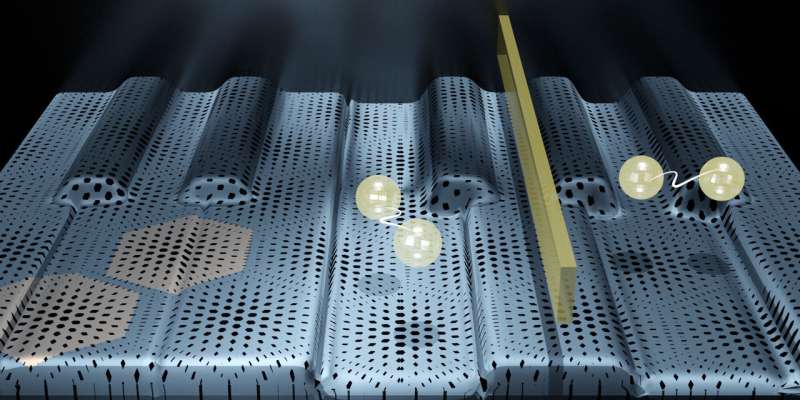Phys.org May 5, 2021
An international team of researchers (Switzerland, Japan) put two layers graphene flakes on top of each other and made a magic angle of exactly 1.06 degrees. The atomic crystal lattices of the graphene flakes created a moiré pattern. They attached several additional electrodes on top of the magic angle graphene flakes to apply an electric voltage to the material. By applying different voltages to the individual electrodes, they turned the magic angle graphene into an insulator in one spot, but a few hundred nanometres to one side it becomes a superconductor. For possible uses in quantum computers the graphene flakes can be turned not just into insulators and superconductors, but also into magnets or topological insulators. This could be exploited to realize different kinds of qubits in a single device…read more. TECHNICAL ARTICLE

By applying electric voltages (“keys”) at different points, the magic-angle graphene can become locally superconducting (electron pairs) or isolating (barrier on the right). Credit: ETH Zurich / F. de Vries